Introduction to Dolphin Communication
When you think about intelligent life in the ocean, dolphins are probably the first creatures that come to mind. But beyond their playful nature lies an intricate and sophisticated communication system that rivals even some aspects of human language. The question “How do dolphins communicate?” opens the door to a fascinating world of sound, touch, and movement beneath the waves.
The Intelligence Behind Dolphin Communication
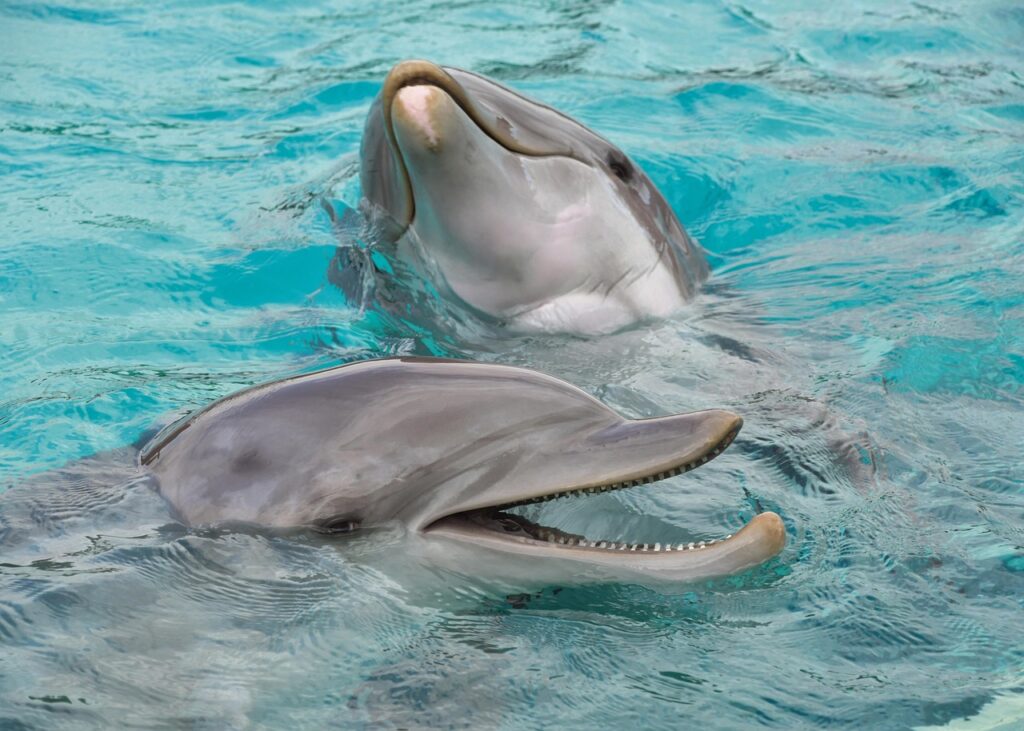
Brain Structure and Cognitive Abilities
Dolphins have large, complex brains with a highly developed neocortex, which supports advanced problem-solving and social interaction. This intelligence is a cornerstone of their ability to use diverse communication methods effectively.
Social Structures and Group Living
Dolphins live in pods—tight-knit social groups where communication is essential for survival, hunting, navigation, and maintaining relationships. Each member of a pod plays a role, and understanding one another is critical.
Types of Dolphin Communication
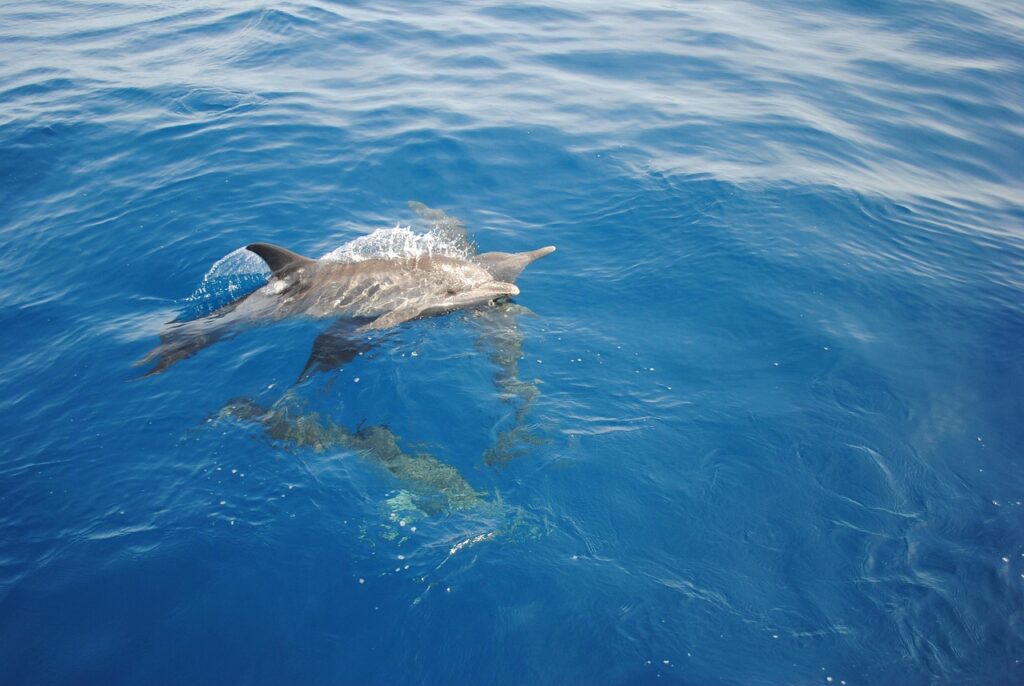
Whistles: The Signature Sound
Dolphins produce a range of whistles to identify themselves, signal danger, or coordinate group movements. These whistles are unique, functioning much like names in human societies.
Clicks and Echolocation
Clicking sounds serve two purposes: echolocation for navigation and object detection, and social signaling within the pod.
Body Language and Physical Gestures
Leaping from the water, rolling sideways, or nodding their heads—dolphins use body movements as visual cues to express intentions.
Touch and Physical Contact
From gentle nudges to playful pushes, touch strengthens bonds and conveys affection or reassurance.
Breaches, Tail Slaps, and Leaps
These dramatic displays can serve as warnings, forms of play, or signals to nearby dolphins.
Signature Whistles: The Dolphin’s “Name”
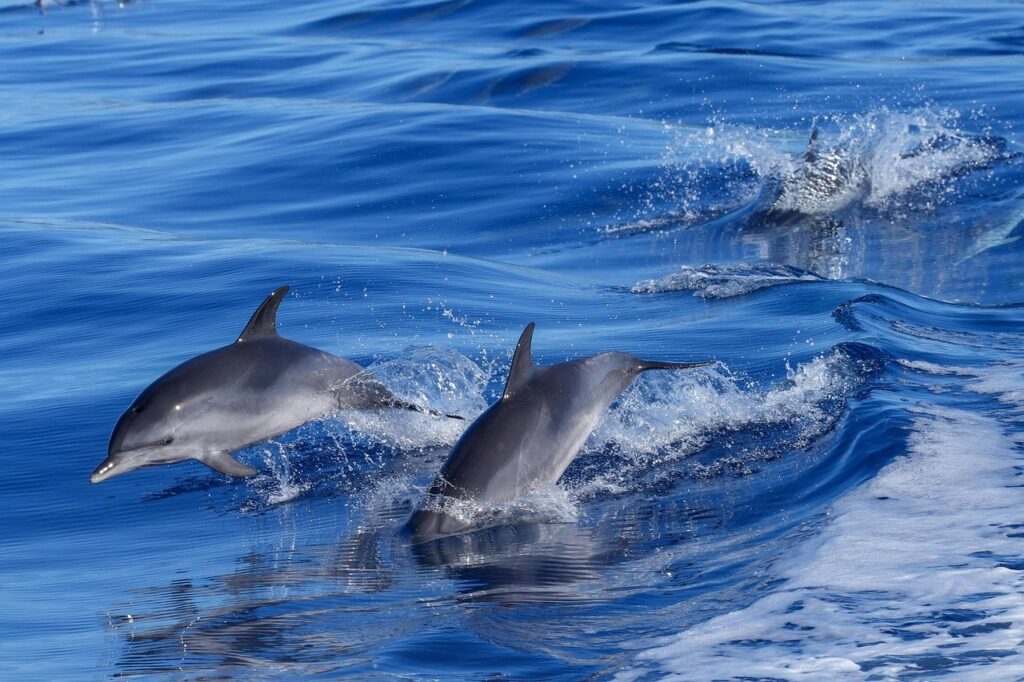
How Signature Whistles Develop
Young dolphins develop their own unique whistle within the first few months of life, which they keep for life.
Recognition Among Pod Members
Pods can recognize each member’s whistle even after years of separation—a remarkable feat of memory and auditory processing.
Echolocation: Seeing with Sound
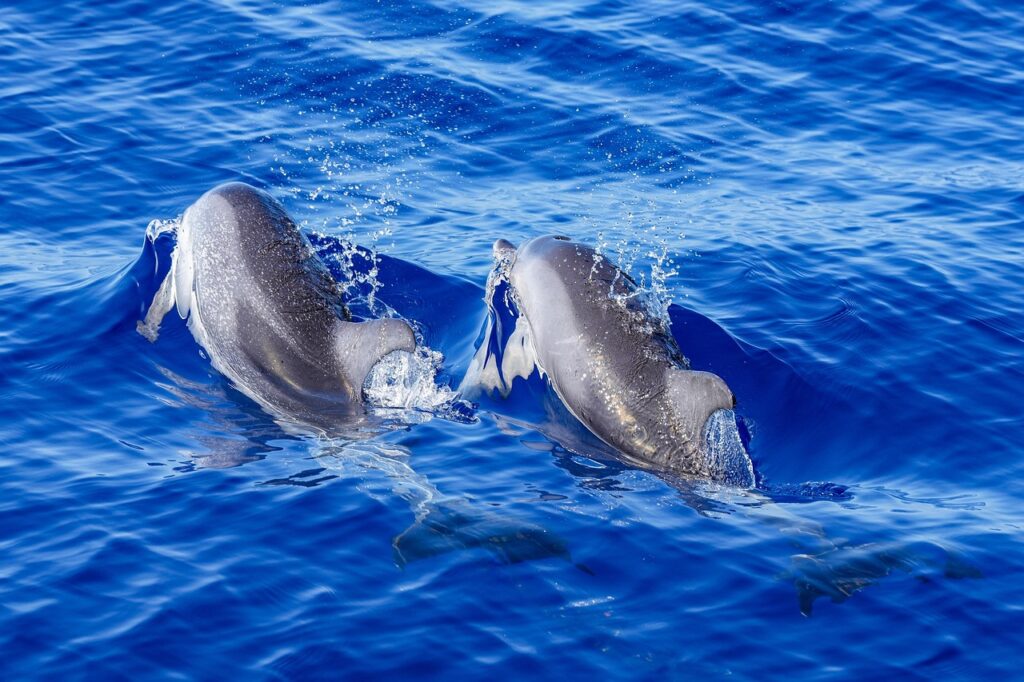
How Dolphins Produce and Interpret Clicks
Sound waves emitted through their melon (a fatty organ in the forehead) bounce off objects and return as echoes, which dolphins interpret to form a mental image.
Echolocation in Hunting and Navigation
This ability allows dolphins to hunt fish even in murky waters and navigate long distances without visual cues.
Body Movements and Non-Verbal Signals
Tail Slapping as a Warning
A rapid slap on the water’s surface warns nearby dolphins of danger.
Synchronized Swimming for Bonding
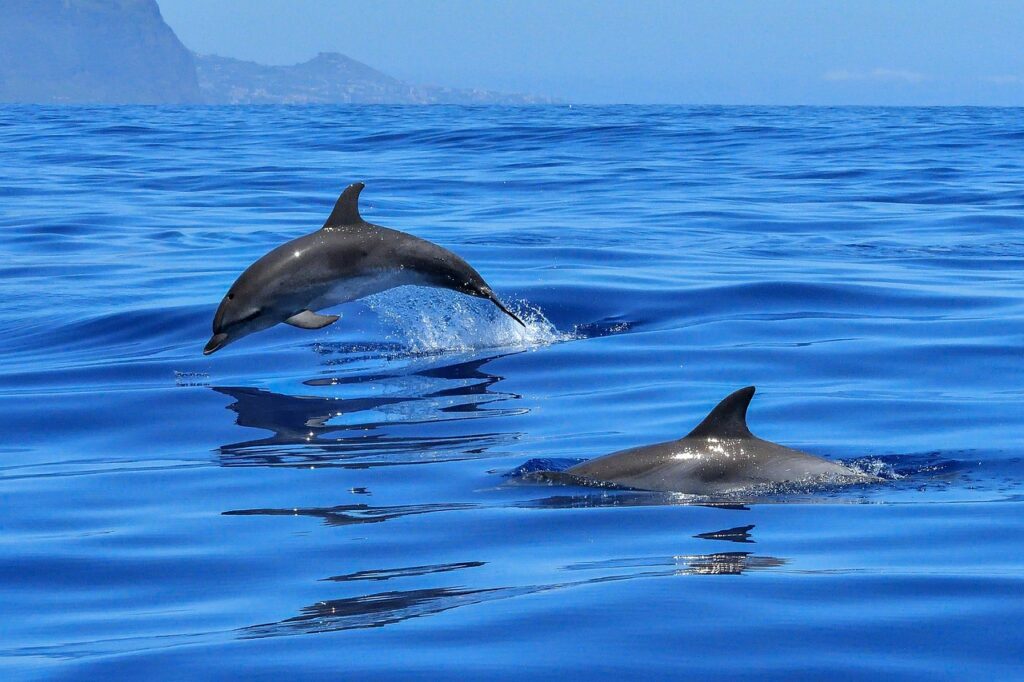
Moving in perfect unison strengthens pod cohesion and signals trust between members.
The Role of Touch in Dolphin Relationships
Social Bonding Through Contact
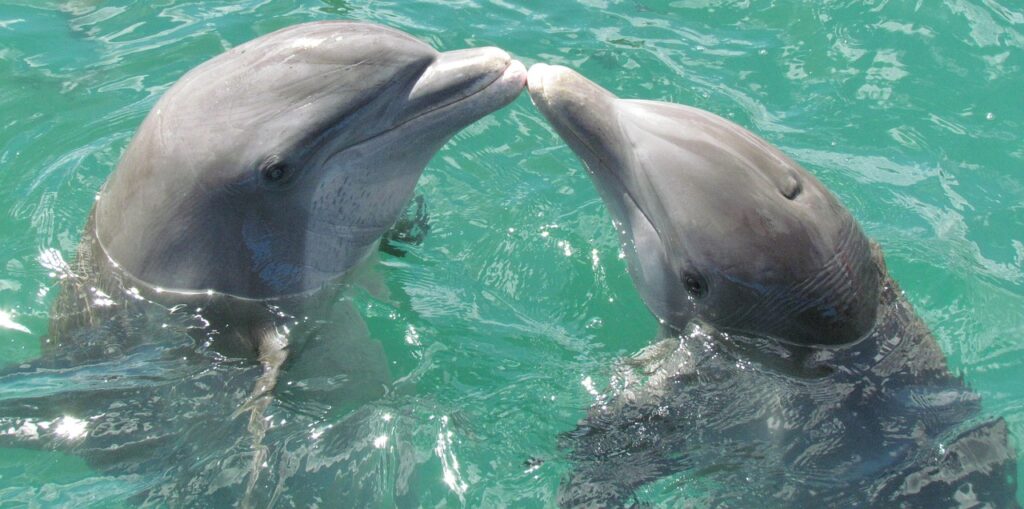
Dolphins often rub against each other, which reinforces friendships and alliances.
Courtship and Mating Behaviors
Touch plays a central role in courtship, with dolphins using gentle caresses to attract mates.
The Science of Dolphin Communication
Research Methods and Acoustic Studies
Marine biologists use underwater microphones (hydrophones) to record and analyze dolphin sounds.
Key Discoveries About Dolphin Language
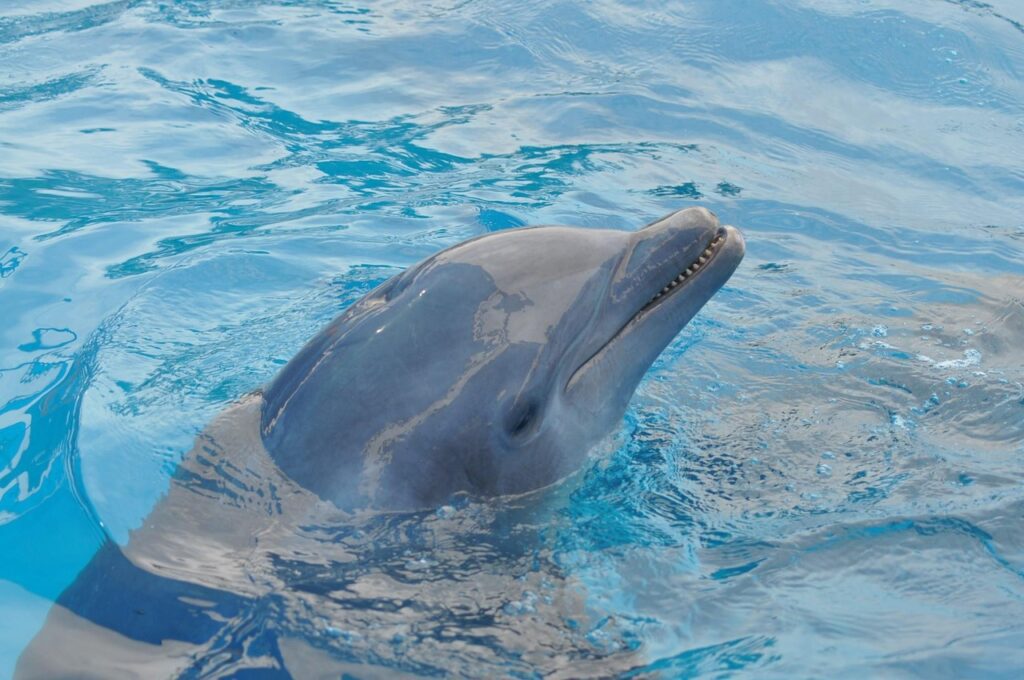
Studies suggest dolphins can combine sounds in complex ways, possibly hinting at a rudimentary grammar.
Human Efforts to Communicate with Dolphins

Training Dolphins in Captivity
Dolphins have been taught to respond to hand signals, sound cues, and even symbolic language.
Experiments in Wild Dolphin Interaction
Researchers have attempted two-way communication using underwater keyboards and sound playback experiments.
Myths and Misconceptions About Dolphin Communication
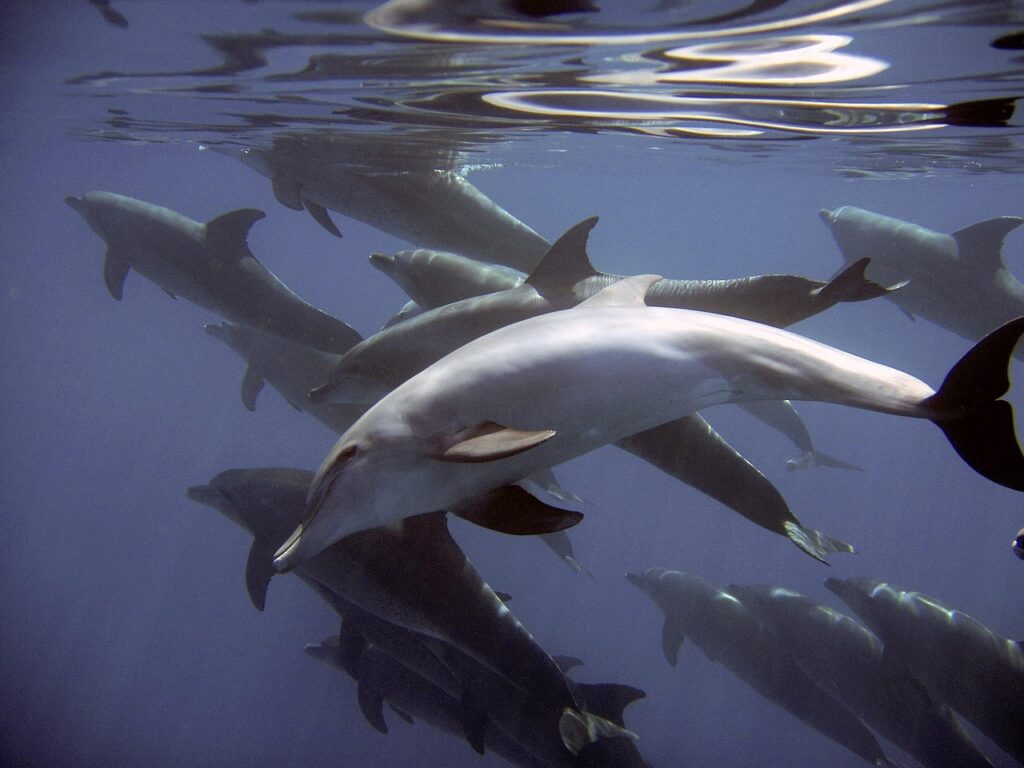
The “Dolphin Telepathy” Myth
While dolphins are intelligent, there’s no scientific evidence that they communicate through telepathy.
Misinterpreted Play Behavior
Not all leaps or flips are messages—sometimes dolphins are simply playing.
Why Dolphin Communication Matters for Conservation
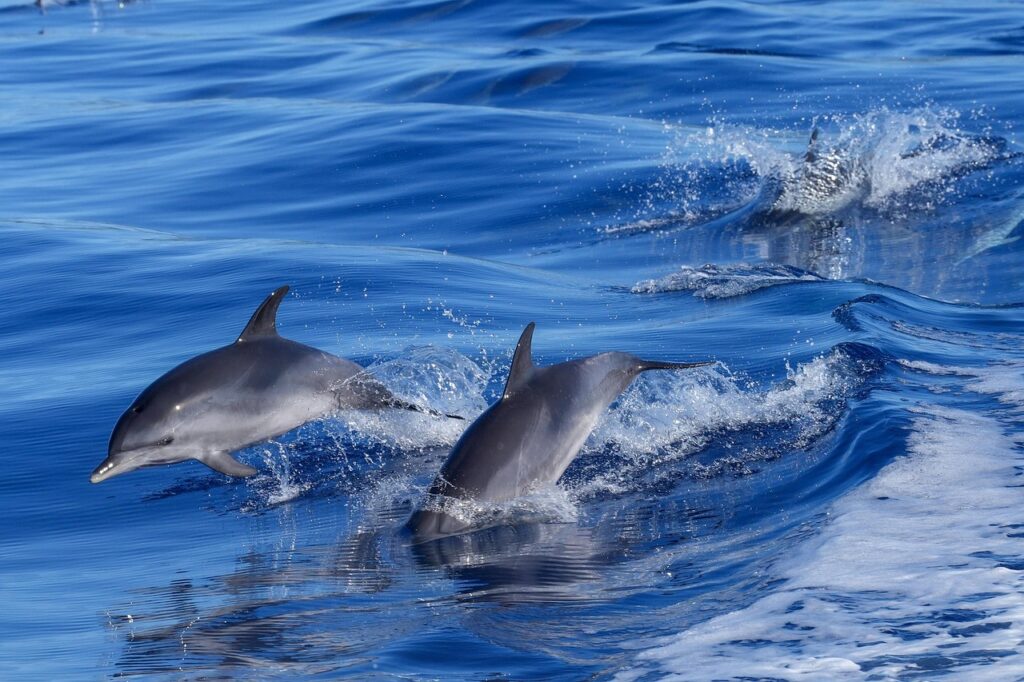
Threats to Dolphin Communication in the Wild
Habitat destruction, fishing nets, and hunting disrupt dolphin social structures.
The Role of Noise Pollution
Ships, sonar, and industrial noise can mask dolphin calls, making it harder for them to find food or avoid predators.
FAQs on Dolphin Communication
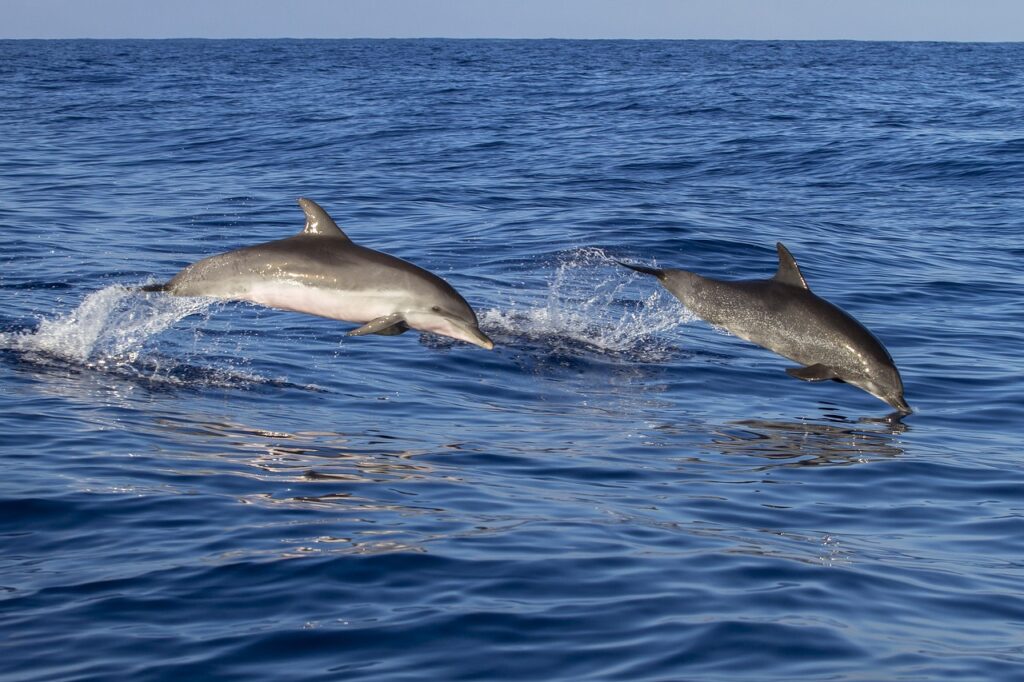
Q1: How far can dolphin sounds travel underwater?
A: Depending on water conditions, dolphin clicks and whistles can travel several kilometers.
Q2: Do dolphins have different dialects?
A: Yes, different pods can have unique variations in their calls, similar to regional accents in humans.
Q3: Can dolphins understand human speech?
A: They can recognize certain human-made sounds but don’t understand language the way humans do.
Q4: Do dolphins ever communicate with other species?
A: While rare, dolphins have been observed interacting with whales and porpoises using body language and clicks.
Q5: What’s the loudest sound a dolphin can make?
A: Their echolocation clicks can reach up to 230 decibels—much louder than a jet engine.
Q6: How young do dolphins start communicating?
A: Calves begin making sounds within days of birth and develop a unique signature whistle in the first year.
Conclusion: Unlocking the Secrets of the Ocean’s Most Talkative Mammals

The mystery of how dolphins communicate continues to fascinate scientists and ocean lovers alike. Through whistles, clicks, body movements, and touch, dolphins maintain complex social lives that rely on constant interaction. As we learn more, protecting their acoustic environment becomes not just a matter of conservation—but a way of preserving one of nature’s most extraordinary conversations.

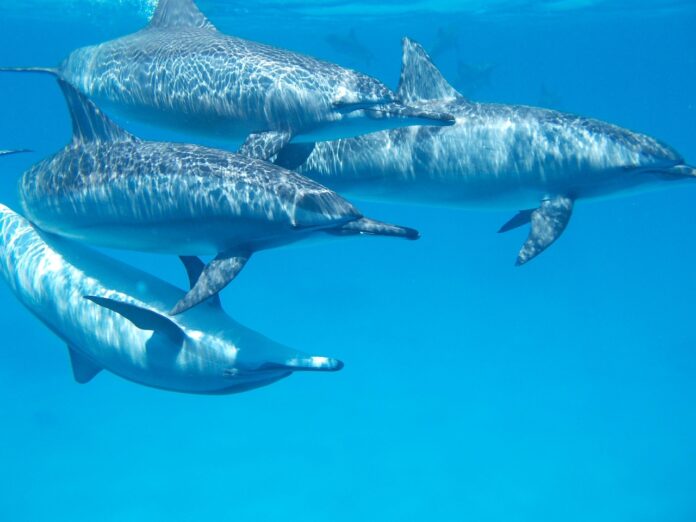
The depth of analysis in this article is commendable.
It offered me a new perspective.
Stop by my webpage VIN check Chile
Your writing is both engaging and informative. This post was a pleasure
to read.
Here is my blog – EasyTitleCheck